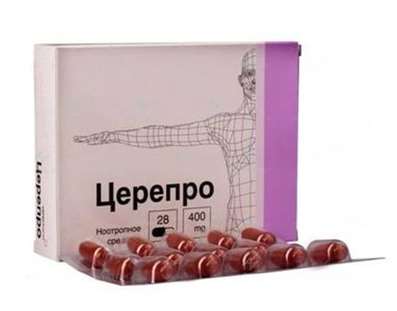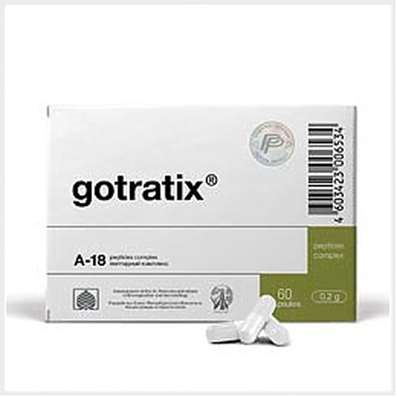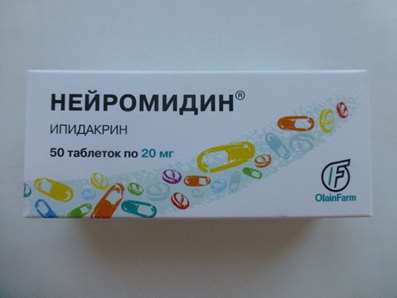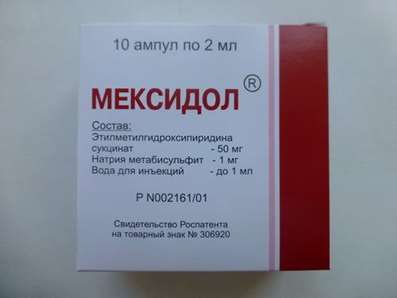Instruction for use: Trombless
I want this, give me price
Dosage form: Gel for external use
Active substance: Heparinum natrium
ATX
C05BA03 Heparin Sodium
Pharmacological group
Anticoagulant direct action for topical use + other drugs [Anticoagulants]
The nosological classification (ICD-10)
I80 Phlebitis and thrombophlebitis: Diseases of peripheral vessels; Inflammation of superficial veins; Inflammatory diseases of veins; Deep venous thrombophlebitis; The disease of veins; Disease of the veins of the lower extremities; Diseases of peripheral vessels; Migrating phlebitis; Insufficiency of veins of lower extremities; Exacerbation of chronic thrombophlebitis; Acute thrombophlebitis; Acute thrombophlebitis of superficial veins; Periphlebitis; Periflebit surface; Superficial inflammation of veins; Surface thrombophlebitis; Surface phlebitis; Thrombophlebitis; Deep vein thrombophlebitis; Thrombophlebitis superficial; Phlebitis; Phlebitis of deep veins; Phlebitis of superficial veins; Phlebopathy; Chronic thrombophlebitis; Endophlebitis
I80.0 Phlebitis and thrombophlebitis of superficial vessels of lower limbs: Thrombophlebitis of superficial veins; Thrombophlebitis of superficial veins of legs; Thrombophlebitis of superficial veins; Phlebitis of superficial veins of legs; Inflammation of veins
I83 Varicose veins of lower extremities: The feeling of heaviness and fatigue in the lower limbs; Varicose disseminated type; varicose veins; Varicose veins of the lower extremities; Varicose disease of lower limbs; Varicose superficial veins; Varicose veins; Varicose vein disease; varicose syndrome; varicose syndrome; Venous claudication; venous varices; venous disease; The disease of the lower extremities; Prevarikozny syndrome; Predvarikozny syndrome; Chronic varicose veins; Sclerotherapy varices
I84 Hemorrhoids: Painful hemorrhoidal nodes; External hemorrhoids; Internal hemorrhoids; Inflammation of hemorrhoids; Exacerbation of hemorrhoids; Chronic bleeding hemorrhoids; Acute hemorrhoidal attack
L98.6 Other infiltrative diseases of the skin and subcutaneous tissue: Infiltrative dermopathy; Inflammatory infiltrates
T14.0 Superficial injury of unspecified area of the body: Abrasions; Scratch; Skin Wounds; Wounds of soft tissues; Hematoma; Hematoma of traumatic origin; Hematomas; Hematomas of muscles; Hematomas of soft tissues; Healing of the skin; Bruise; Bruising due to sprains and bruises; Microtrauma; External bruises; Small combing; Superficial hematoma; Superficial damage to the skin and mucous membranes; Subcutaneous hematoma; Post-traumatic hematoma; Post-traumatic disturbance of microcirculation; Skinness of the skin; Traumatic plexus lesions; Injury; Contusion of soft tissues; Joint bruise; Traumatic bruises; Traumatic injury; Primary treatment of surface contaminated wounds; Abrasion; Bruise
T14.6 Injury of muscles and tendons of unspecified body region: Pain syndrome in pathology of tendons; Pain in the tendons; Pre-inflammatory soft tissue inflammation; Rupture of muscles; Rupture of muscles without compromising the integrity of the skin; Muscle ruptures; Soft tissue injuries; Injuries of muscle-tendon tissues; Muscle injuries; Soft tissue injuries; Injuries to tendons
T14.9 Injury unspecified: Pain syndrome after trauma; Pain syndrome with injuries; Pain syndrome with injuries and after surgery; Pain in case of injury; Pain of a traumatic nature; Joint pain with injuries; Postoperative and post-traumatic pain; Pain in case of injury; Pain of traumatic origin; Severe pain syndrome of traumatic origin; Deep tissue damage; Deep scratches on the trunk; Closed injury; Minor Household Injuries; Minor skin damage; Violations of the integrity of soft tissues; Uncomplicated trauma; Extensive traumatic injury; Acute pain syndrome of traumatic origin; Edema with trauma; Postponed sports injuries; Post-traumatic pain; Soft tissue injuries; Joint wounds; Sports injuries; Injury; Traumatic pain; Traumatic pains; Traumatic infiltrate; Injuries to sports
Z100 * CLASS XXII Surgical practice: Abdominal surgery; adenomectomy; Amputation; Coronary angioplasty; Angioplasty of the carotid arteries; Antiseptic skin treatment for wounds; Antiseptic Hand; Appendectomy; atherectomy; Balloon coronary angioplasty; Vaginal hysterectomy; The coronary bypass; Interventions in the vagina and cervix; Interventions on the bladder; Intervention in the mouth; Restoration and reconstructive surgery; Hand hygiene of medical personnel; Gynecologic surgery; Gynecological intervention; Gynecological surgery; Hypovolemic shock during operations; Disinfection of purulent wounds; Disinfection of wounds edges; Diagnostic intervention; Diagnostic procedures; Cervical Diathermocoagulation; Long-surgery; Replacing the fistula catheters; Infection in orthopedic surgery; Artificial heart valve; cystectomy; Short-term outpatient surgery; Short-term operation; Short surgical procedures; Krikotireotomiya; Blood loss during surgery; Bleeding during surgery and in the postoperative period; Kuldotsentez; laser photocoagulation; laser coagulation; retinal laser coagulation; Laparoscopy; Laparoscopy in Gynecology; CSF fistula; Small gynecological operations; Small surgical procedures; Mastectomy and subsequent plastic; mediastinotomy; Microsurgical operations on the ear; Mukogingivalnye operation; suturing; Minor surgery; neurosurgical operation; Immobilization of the eyeball in ophthalmic surgery; testectomy; pancreatectomy; Perikardektomiya; The period of rehabilitation after surgery; The period of convalescence after surgery; Percutaneous transluminal coronary angioplasty; Pleural thoracentesis; Pneumonia postoperative and posttraumatic; Preparation for surgical procedures; Preparation for surgery; Preparation of the surgeon's hands before surgery; Preparation of the colon for surgical procedures; Postoperative aspiration pneumonia in neurosurgical and thoracic surgery; Postoperative nausea; Postoperative bleeding; postoperative granuloma; postoperative shock; The early postoperative period; myocardial revascularization; Radiectomy; gastric Resection; bowel resection; uterine Resection; liver Resection; enterectomy; Resection of part of the stomach; Reocclusion of the operated vessel; Bonding tissues during surgical procedures; Removal of sutures; Condition after eye surgery; Condition after surgery; Condition after surgery in the nasal cavity; Condition after gastrectomy; Status after resection of the small intestine; Condition after tonsillectomy; Condition after removal of the duodenum; Condition after phlebectomy; Vascular surgery; Splenectomy; Sterilization of surgical instruments; Sterilization of surgical instruments; sternotomy; Dental surgery; Dental intervention in periodontal tissues; strumectomy; Tonsillectomy; Thoracic surgery; Thoracic surgery; total gastrectomy; Transdermal intravascular coronary angioplasty; Transurethral resection; Turbinektomiya; Removal of a tooth; cataract surgery; Removal of cysts; tonsillectomy; Removal of fibroids; Removing the mobile primary teeth; Removing polyps; Removing broken tooth; Removal of the uterus body; Removal of sutures; Fistula likvoroprovodyaschih ways; Frontoetmoidogaymorotomiya; Surgical infection; Surgical treatment of chronic limb ulcers; Surgery; The surgery in the anal area; The surgery on the colon; Surgical practice; The surgical procedure; Surgical interventions; Surgery on the gastrointestinal tract; Surgical procedures on the urinary tract; Surgical procedures on the urinary system; Surgical intervention of the genitourinary system; Surgical procedures on the heart; Surgical manipulation; surgery; Surgery on the veins; Surgical intervention; Vascular surgery; Surgical treatment of thrombosis; Surgery; cholecystectomy; Partial gastric resection; hysterectomy; Percutaneous transluminal coronary angioplasty; Percutaneous transluminal angioplasty; Coronary artery bypass; tooth Extirpation; Extirpation of milk teeth; pulpectomy; pulsative cardiopulmonary bypass; tooth Extraction; teeth Extraction; cataract extraction; Electrocoagulation; endourological intervention; episiotomy; Etmoidotomiya; Complications after tooth extraction
Composition
Trombless
Gel for external use - 1 g
active substance: Heparin sodium (0.00833 g with the activity of heparin sodium - 120 IU / mg) 1000 IU
Auxiliary substances: ethanol (ethyl alcohol) 240 mg; Methylparahydroxybenzoate (nipagine, methylparaben) - 1.2 mg; Propyl parahydroxybenzoate (nipazole, propylparaben) 0.3 mg; Diethanolamine (2,2-iminodiethanol) - up to 14 mg to produce a gel with a pH of 7.5 to 8.7; Carbomer (carbopol) - up to 15 mg; Water (purified water) - up to 1 g
Trombless Plus
Gel for external use 1 g
Active substances: Heparin sodium (8.33 mg with the activity of heparin sodium 120 IU / mg) 1000 IU
Troxerutin 20 mg
Dexpanthenol 100 mg
Benzocaine 1 mg
Auxiliary substances: ethanol - 100 mg; Methylparahydroxybenzoate - 1.5 mg; Trolamine - 7 mg; Carbomer - up to 10 mg; Glycerol - 50 mg; Water - up to 1 g
Pharmachologic effect
Mode of action - Anti-inflammatory, anti-edematous, anticoagulant, antiproliferative, local anesthetic.
Dosing and Administration
Trombless
Externally. The gel column, 3-10 cm long, is lightly rubbed onto the skin over the affected area 1-3 times a day. The gel is used daily, on average 3 to 7 days. At a thrombosis of hemorrhoidal veins pads with the put gel are used. The duration of treatment is determined by the doctor. ThromblessŪ does not have a local irritant effect.
Trombless Plus
Externally, apply a thin layer on the skin above the affected area and around it, evenly spreading on the surface of the skin with light circular motions 2-3 times a day. The course of treatment - 2-3 weeks, with the recurrence of a relapse of the disease.
When trophic ulcers with mild exudation before use, the wound surface is cleaned of exudate and necrotic tissues, if necessary, washed with hydrogen peroxide solution 3%, nitrofural 1: 5000 or chlorhexidine 0,05% and dried. The gel is applied with a uniform thin layer on the entire affected surface and a sterile gauze bandage is applied. Change dressings produced once a day. With the open method of treatment, the drug is applied 1-2 times a day. The duration of treatment is determined by the dynamics of epithelialization.
With subcutaneous hematomas, localized edema, aseptic infiltrates, injuries, bruises and similar conditions, it is applied to the affected area 2-3 times a day until the normal state of the damaged tissues is completely restored.
Release form
Trombless
Gel for external use, 1000 IU / g. In tubes of aluminum or tubes of PE laminate, 10, 20, 30, 40, 50 g. 1 tube in a pack of cardboard.
Trombless Plus
Gel for external use. In tubes of aluminum or PE laminated, 10, 20, 30, 40, 50 or 100 g. Each tube in a pack of cardboard.
Manufacturer
JSC "Nizhpharm" Russia.
Conditions of supply of pharmacies
Trombless
Without recipe.
Trombless Plus
On prescription.
Storage conditions of the drug Trombless
At a temperature not higher than 25 ° C.
Keep out of the reach of children.
The shelf life of the drug Trombless
Gel for external use - 2 years.
Gel for external use 1000 IU / g - 3 years.
Do not use beyond the expiration date printed on the package.

 Cart
Cart





